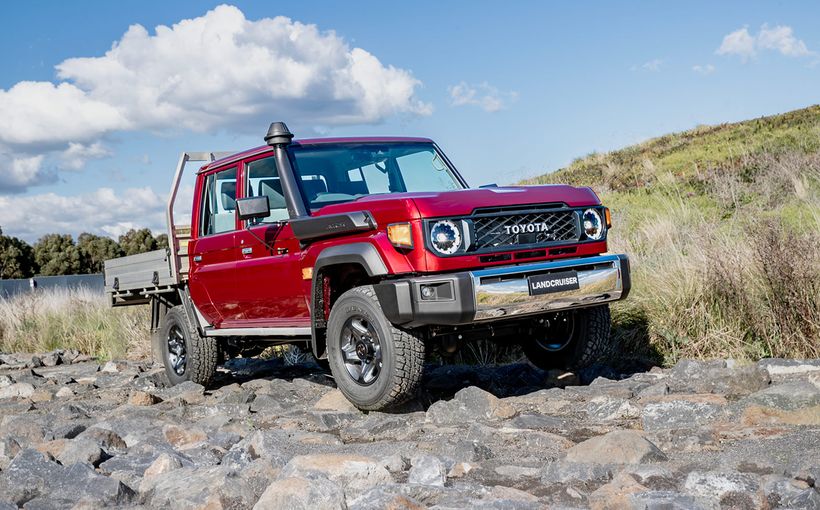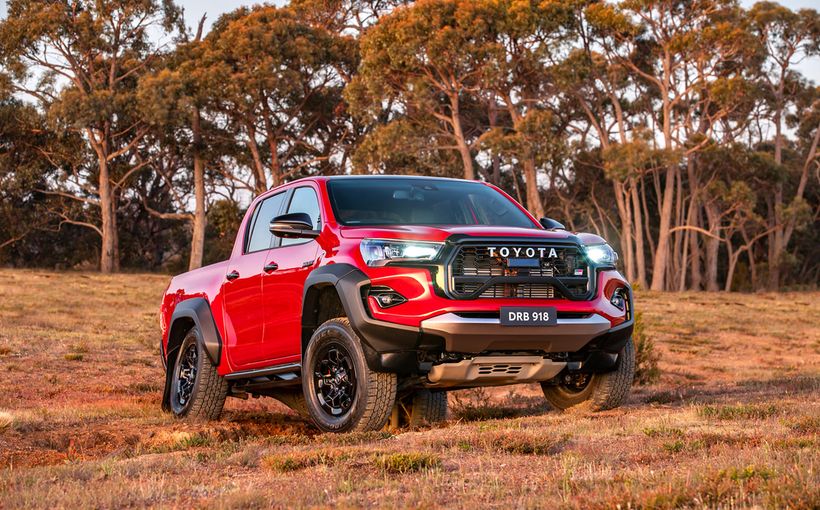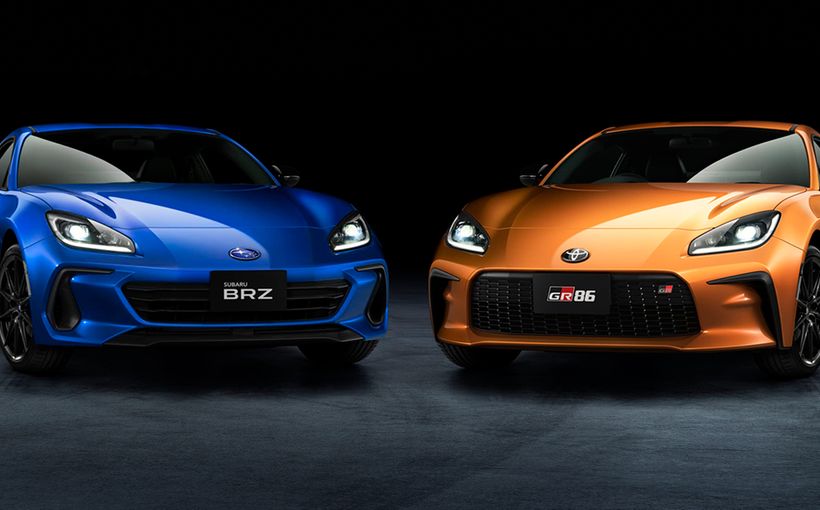Toyota MR2: surely the closest thing to a bargain basement Ferrari

Few automotive companies worked so hard to upgrade their image in the 1980s as Toyota. By the time we had embarked on that decade, the glorious 2000 GT of the mid-1960s had become the faintest of memories, a rare and exotic specimen with no evident connection to dull mainstream Toyotas. The Corolla was still a boxy little rear-drive runabout, the Corona was probably the worst car in its class and the first Cressida of 1977 (despite its Chaucerian name) had nothing to recommend it except good finish and reliability. (My father replaced his HQ Premier 253 with one: what a letdown!) Even the supposedly sporty Celica was slow and unexciting to drive.
So, when, outspoken Wheels editor, Peter Robinson, wrote ‘At last, Toyota turns the corner' as a cover line for an issue in 1983, this seemed like huge news. The car he was referring to was the imported Corona Liftback – a machine absolutely not to be confused with the locally built Corona – and it marked the beginning of a series of exciting Toyotas.
After the Liftback came the first front-wheel drive Celica which was, frankly, nothing short of astonishing in 1985, closely followed by the third generation Supra (the second version to be sold here, the first having been the 1983 Celica Supra).
If anything, the first MR2, which made its debut on its home market, in Europe and the US in 1984, was even more of a surprise than those two highly effective sports coupes, both the work of the same chief engineer, Akihito Wada. Like the Supra, the MR2 was rear-drive, which was already unusual for this size of car.

And it was the first mass-produced Japanese car with a mid-mounted engine. It was as if Toyota’s product planners wanted to develop as wide a range of sporting models as possible.
And how different these three were: the front-wheel-drive Celica was among the sharpest handling vehicles of this configuration; the Supra, though heavy, was dynamically brilliant; the MR2 was revelatory.

By the time this first generation MR2 reached the Australian market in late 1987, observers had become accustomed to Toyota's state of the art naturally aspirated engine technology. Twin overhead camshafts and four valves per cylinder – the stuff of fantasies only years before – were fast becoming thenToyota norm. Even the first generation front-drive Corolla was available from 1986 with such an engine and named Twin Cam accordingly. This was the 1.6-litre 4A-GE, a true gem. No BMW, Mercedes-Benz or Alfa Romeo could boast such high engine technology in the mid-1980s.

Although the MR2, at 1050kg, was some 80kg heavier than the Corolla Twin Cam, it felt much sportier. With its weight distribution of 45/55, wheelspin in standing start acceleration was hardly an issue – indeed, it was quite difficult to get that necessary modest loss of traction to avoid the car bogging down off the line.
The gear ratios and final drive were shared with the Twin Cam, but there were some changes to the 4A-GE and this revised engine would also be fitted to the hot Corolla.
With its sweet high-tech engine nestled behind the driver's back (there was space for one passenger as well), there was a great feeling of the car being built around you, that you, as driver, were located right at the heart of things. Of course, the MR2 was not the world's first small mass-market mid-engined sports car, the Fiat X1/9 having preceded it by upwards of a decade; incidentally, the X 1/9 made a return to the local market as the ‘Bertone X 1/9’ a few months after Toyota Australia belatedly introduced the MR2. But the Bertone was indifferently finished and rather down on power compared with the Japanese car.

In this century, a kerb weight of 1050kg is hard to credit (with even shopping trolley hatches being likely to tip the scales at 1300kg-plus) and yet the MR2 felt very solid on the road. With 88kW of power at 6600rpm and 139Nm of torque at 5000, the MR2’s engine required plenty of revs to reveal its promise. Nevertheless, it was ultra-smooth and docile, capable of pulling from just 1000rpm in fifth. Like all good driver’s cars, the MR2 felt as if it could handle considerably more power.
Although Toyota Australia’s executives had long been keen on importing the mid-engined sports car, they didn't hold much hope. Early production was mostly left-hand drive and the emissions-modified version of the engine could not accept leaded fuel (Australia was not due to go unleaded until 1986.) Also, it would prove very expensive to make the modifications required for compliance with Australia’s perhaps excessively demanding design rules. (In 1986 I was a guest at the international launch of the Jaguar XJ40. During a factory tour we were shown how different stations within the plant modified cars to meet the special requirements for overseas markets; Australia had the longest list!)
The MR2’s performance was probably not quite up to the appearance with zero to 100km/h taking 10.4 seconds and the standing 400m 17.2. But, thanks largely to excellent aerodynamics, the MR2 could cleave its way through the air all the way to 191km/h.
Handling was well balanced and oversteer was available for the keen driver. The car was usually manageable, largely because of the relative lack of power.
Boot space was good and the removable targa panels in the roof were a great feature.

The MR2 was sold in small numbers as a premium offering. The price in September 1987 was $32,950, which was much less than the price of a Ferrari Mondial at $153,104, but significantly more than the Laser TX3 which offered similar performance (though with a lower top speed) for $17,385.
I think when most automotive enthusiasts picture the Toyota MR2, it’s the second generation model that hovers into view. This one went on sale locally in March 1990. For the first time, Toyota had given its small mid-engined sports car sufficient power. With 117kW at 6600rpm and 190Nm at 4800 from its 2.0-litre engine, it could sprint to 100km/h in 8.1 seconds, which was quick by any normal standards in 1992.

Although it was heavier than the first model, it still boasted a superior power to weight ratio. The targa roof remained standard.
The new model also got anti-lock brakes. You’d expect a faster, sexier, better equipped second generation car to carry a price premium, but it was relatively modest. By late 1990 a TX3 cost $21,700 while the new MR2 was $41,070, nearly 25 per cent more than the Mazda MX-5. But in performance terms, the Toyota was in a different league now, while the first MR2 had similar acceleration to the Mazda and a higher top speed.

To look at the two MR2s side by side, you would not necessarily see the new car as related to the old, except for the Toyota name (and the heavy-handed chromed corporate logo was standardised by 1990). The first MR2 was chunky and slab-sided, while the ’90s Mister Two was altogether at once sleeker and tougher in appearance, more like a kind of low-price Ferrari Mondial.
But the new car with nearly 20 per cent more power was decidedly twitchy at the limit. Lift-off oversteer was quickly induced and required sharp, even expert, reactions to control.

Toyota Australia’s engineers had already made some changes to the Mark II’s suspension settings and more were to come. The aim was to make the transition to oversteer more gradual. Tyre profiles dropped from 60-series to 55-series on 15-inch alloys. The rubber was either Bridgestone RE010 or Yokohama AO22.
I can’t help but believe that these changes were largely in response to the cover story of the November 1990 edition of Wheels: ‘On the Limit: we find Australia’s best handling car’. The dozen vehicles tested included the original version of the second gen MR2. There was a road loop and hot laps at Eastern Creek Raceway with none other than Kevin Bartlett at the wheel. KB opined of the MR2:
It’s a true sports car, no risk in the world about that, with a limit way above what most people are ever going to drive. It just needs a tiny bit of refinement in spring rates and shocks.
But, having said that, a press-on driver can still find himself sideways very, very easily. Too easily. And that’s the MR2’s downfall.
If you lift your foot for any reason, you’ve got to be very careful how far and how quickly you lift it off. The MR2 has the tendency to turn its tail quite drastically and build into big-time oversteer. It is possible to drive it sideways, but we’re talking about the top five per cent of drivers here.
Once it breaks, the average enthusiast is not going to be quick enough or measured enough in his inputs to bring it back.
Nevertheless, the electronically recorded data showed that the MR2 was the quickest through corners of the dozen cars tested, which included the Mazda MX-5, Honda CRX, Nissan 300ZX, Peugeot 205 GTI and Holden Commodore VN Group A SS.

In their final ratings, combining road and track testing and expert opinion, the Wheels team rated the Toyota third outright behind the 300ZX and with the MX-5 first.
The 1992 upgrade to the MR2 involved more than simply addressing the lift-off oversteer issue. Softer rear spring rates, a lower ride height and the bigger diameter wheels with lower profile rubber all contributed to more benign handling with a more supple ride.
Interestingly, the reduced twitchiness in the handling meant Toyota Australia’s engineers felt they could install a full engine bay cross-brace.
A more sophisticated later style ABS system was used. There were new seats with firmer and better bolstering. And a new steering wheel with spokes in the ten to two position underlined the message that this more polished Mister Two was a full-on driver’s car. (Incidentally, none of these models except the 1994 GT had power steering and neither first nor second generations needed it – another bonus of the amidships engine location.)

A final update in 1994 saw the introduction of GT and Bathurst special editions, promising 125kW at 7000rpm. The GT came with leather, cruise control, fog lights, remote central locking and an alarm. A CD was added in 1995. But air-conditioning remained on the options list.
In summary, any version of the MR2 is desirable, although they are no longer easy to find, which is unsurprising considering the quite low numbers sold. No doubt about it, both shape MR2s(I’m speaking of these early cars) are originals with much of the spirit of a Fiat X1/9 but built to last and will doubtless repay careful cellaring.










